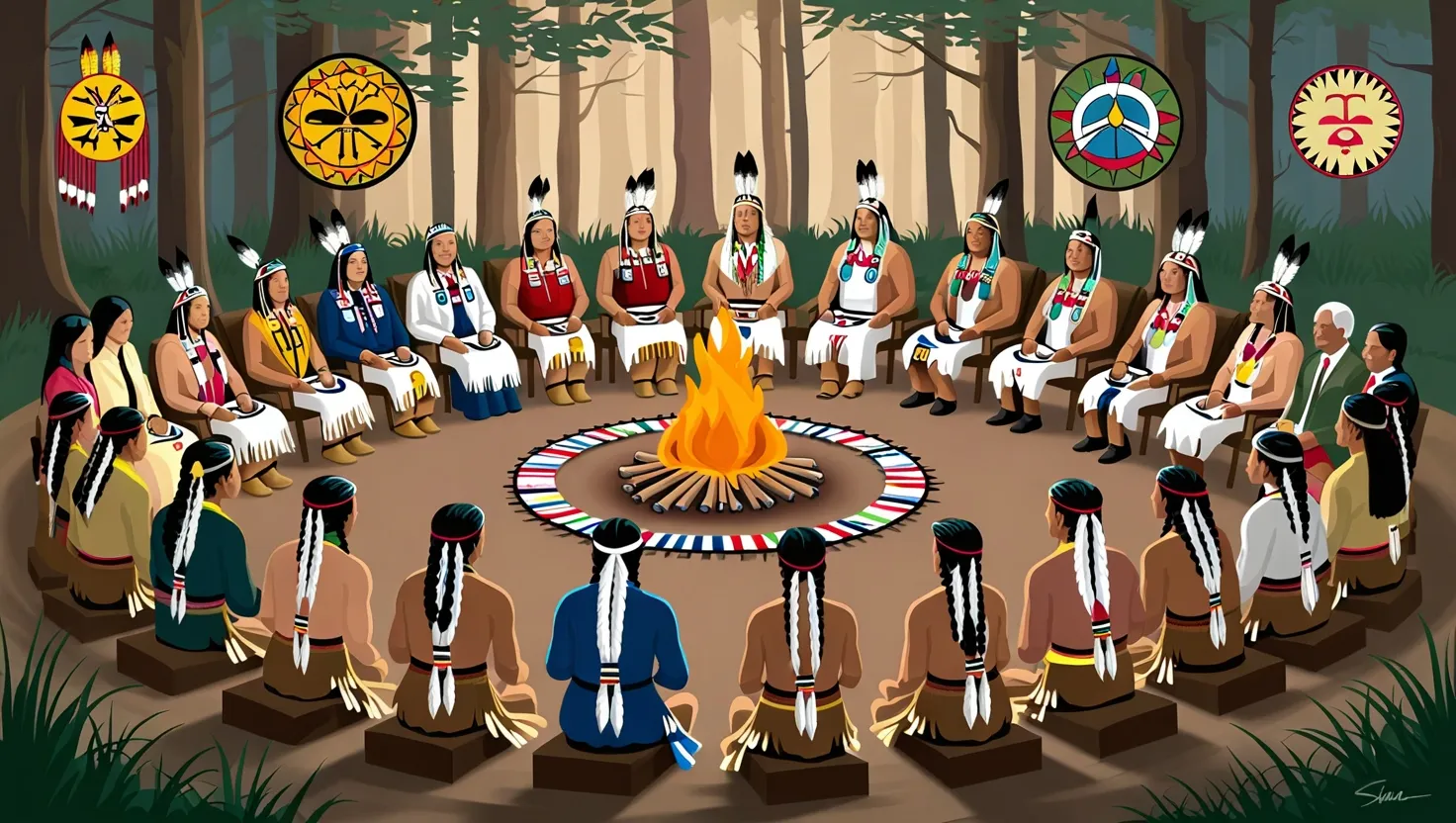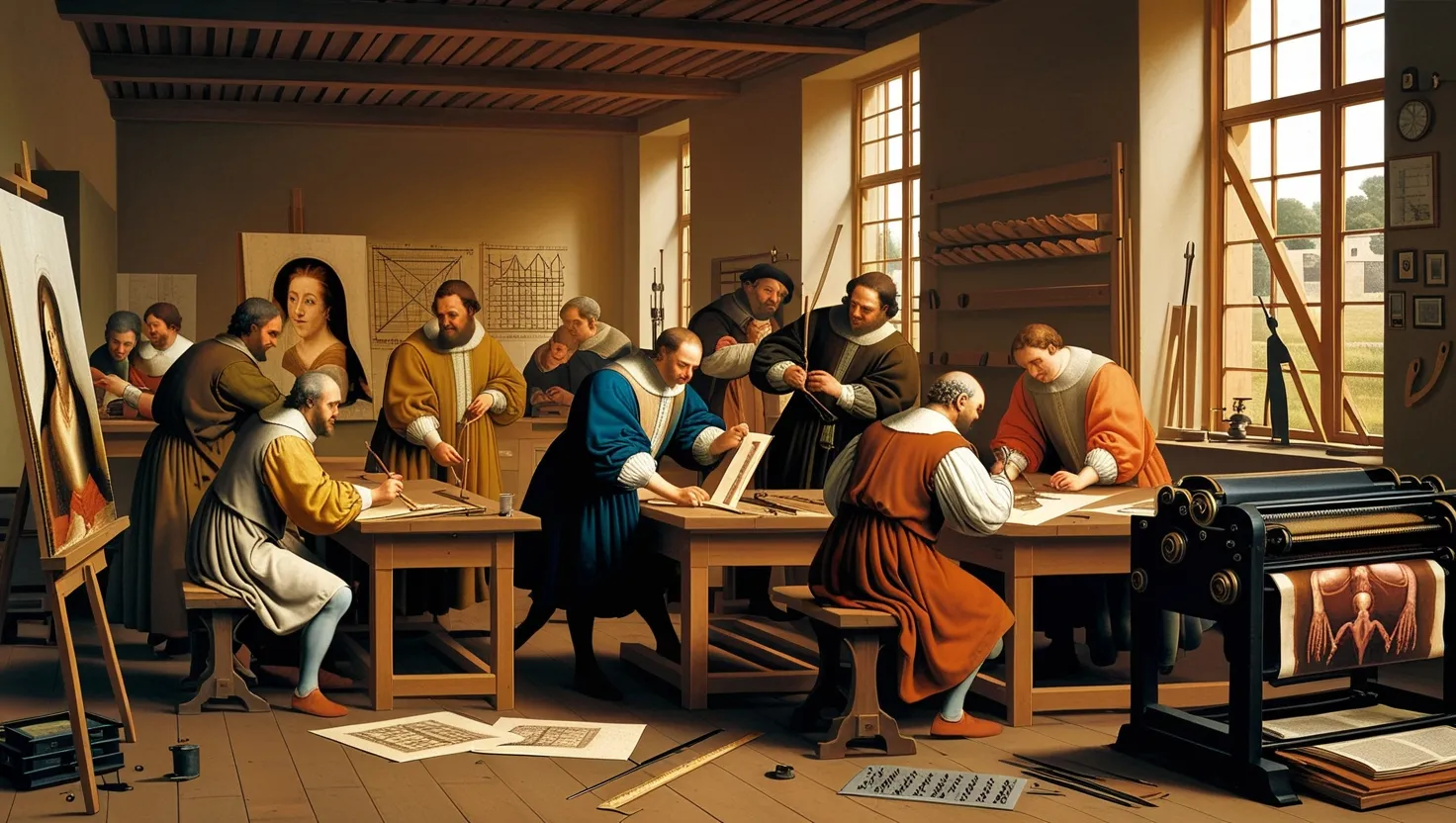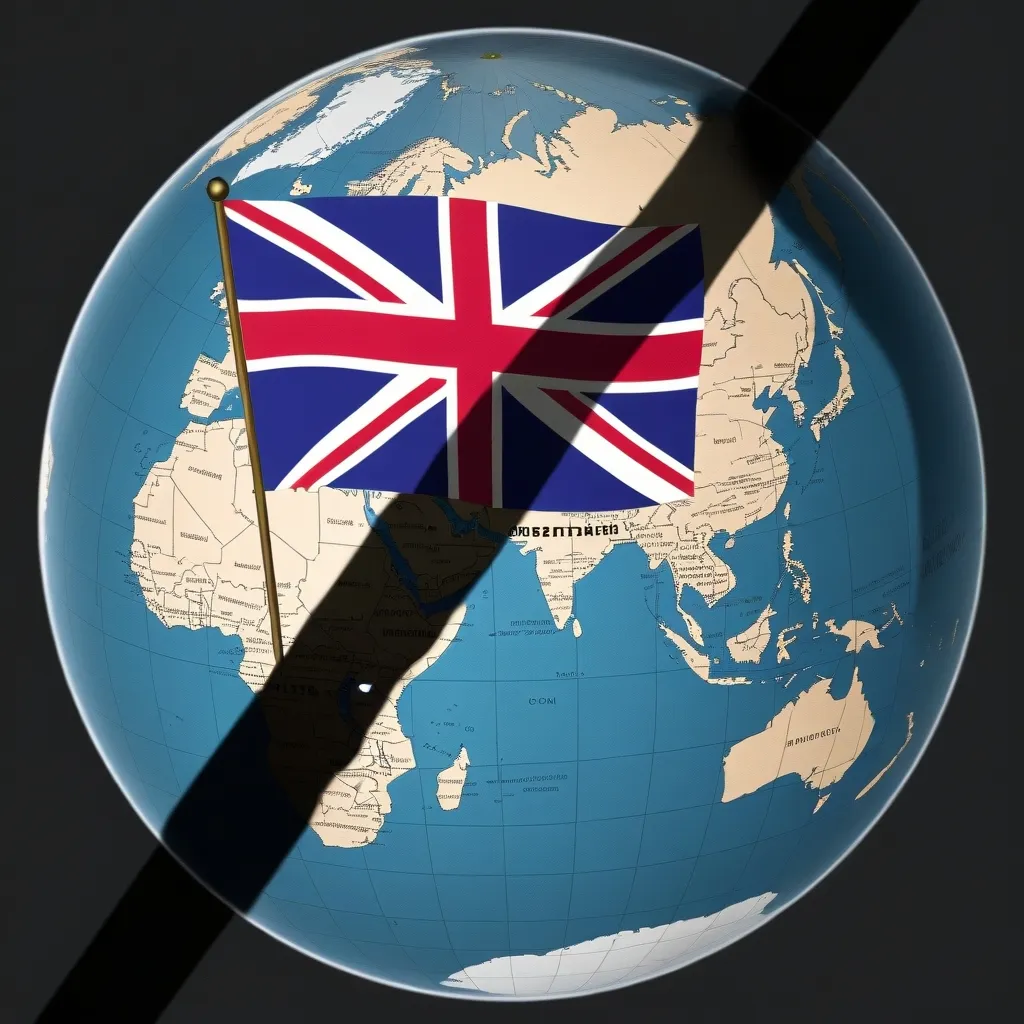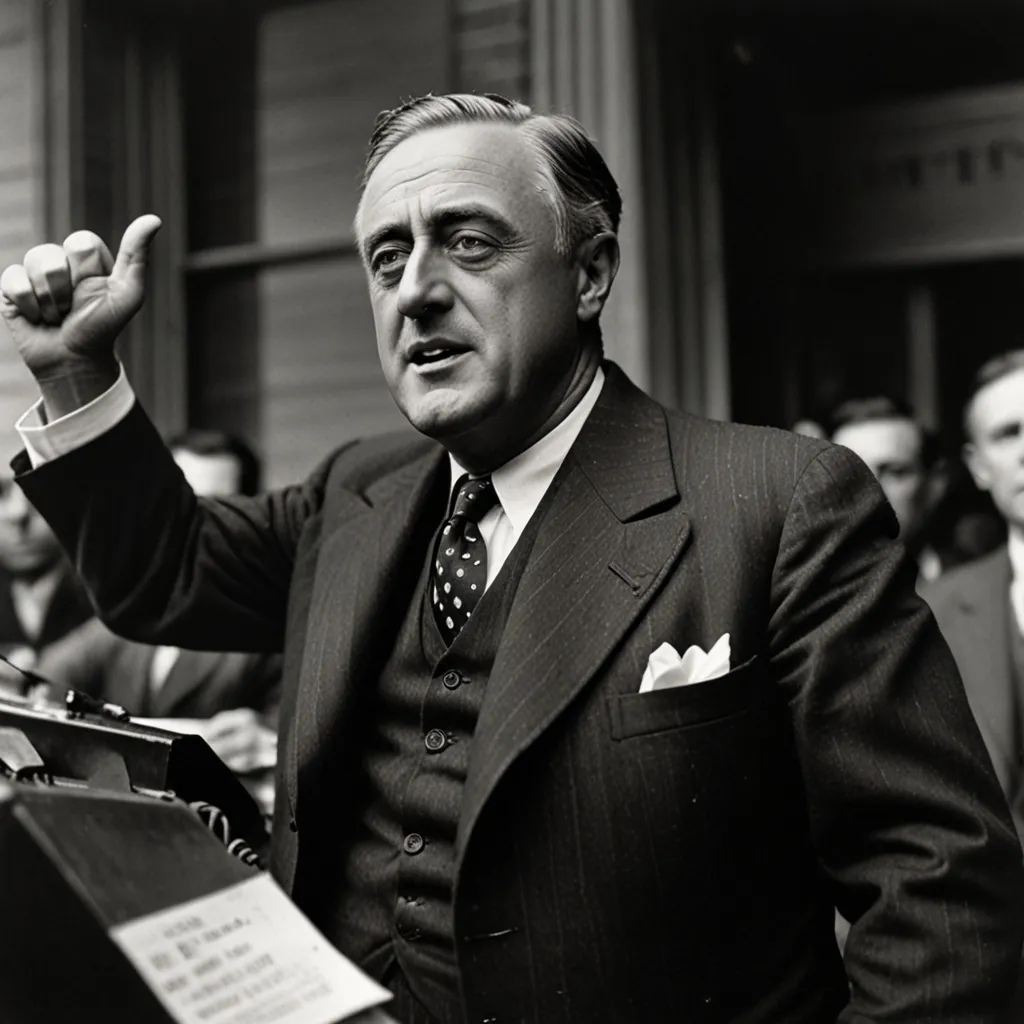If you told me a political system in North America practiced written constitutional law, representative government, and meaningful checks and balances centuries before the Declaration of Independence, would you believe it? Often, we are taught that democratic principles sprang from the minds of 18th-century European thinkers, but the story is broader, richer—and far older.
The Haudenosaunee Confederacy, often known in English as the Iroquois Confederacy, was a remarkable alliance built among different nations: the Mohawk, Oneida, Cayuga, Seneca, Onondaga, and later, the Tuscarora. Their Grand Council, shaped by the Great Law of Peace, functioned as a living document—dynamic, intricate, enforced not just through tradition but through a robust legal structure. Wampum belts, systems of symbolic beads woven in specific patterns, formed their version of documented law, a vivid reminder that literacy and record-keeping do not always wear the face we expect.
When I think about the foundations of this Confederacy, five principles always stand out—each one with surprising echoes in our modern world.
Let’s start with consensus. Forget the idea of voting where the majority wins and the rest go home frustrated. Here, every voice mattered. Decisive action only moved forward when all representatives agreed. Imagine a Congress today that could only pass laws on unanimous votes; I picture lengthy debate, hard compromise, and maybe a little exasperation—but also decisions everyone supports. The Iroquois prioritized unity and the prevention of domination by any single group. Is it slower? Absolutely. Yet the endurance of the Confederacy—lasting for hundreds of years, adapting to everything from European invasion to global epidemics—suggests there’s something powerful about demanding that all sides remain at the table.
“Coming together is a beginning; keeping together is progress; working together is success.” — Henry Ford
The second surprise is their matrilineal system. Women’s political agency remains limited in many corners of the world today, but the Haudenosaunee gave their Clan Mothers real teeth. These senior women controlled land, appointed and removed male chiefs, and could prompt council debates on issues they deemed urgent. Chiefs didn’t serve at the pleasure of the electorate so much as at the pleasure of the mothers—who were knowledgeable, chosen by consensus themselves, and answerable to their clan. This wasn’t just symbolic influence, but operational power. I sometimes wonder: What would it mean for today’s boardrooms or parliaments if key leadership roles could be revoked by a council of respected matriarchs? Would accountability mean something different?
“Women are the real architects of society.” — Harriet Beecher Stowe
Next, the Confederacy’s boundaries were clear not just between nations but inside every office. No chief could hold two posts simultaneously; power was intentionally diffused to prevent consolidation. A leader failing in his duties could and would be deposed—no lifetime protections, and transparency held supreme. In our world of career politicians and entrenched bureaucracies, the concept feels radical: no individual, no matter how skilled or prominent, is indispensable. The office matters more than its occupant. Over the years, I’ve met people who think checks and balances are a 1770s invention. The Haudenosaunee were living them out long before Pennsylvania ever had a legislature.
“Nearly all men can stand adversity, but if you want to test a man’s character, give him power.” — Abraham Lincoln
Another often-overlooked aspect is clan-based representative government. The Confederacy wasn’t just delegates from territories, but spokespeople from groups woven together by family and kinship lines. Clans acted like miniature political parties, responsible for looking after their members, selecting leaders, and seeing to justice for all. There was no place for leaders acting purely out of personal ambition; everything was rooted in service. Their political culture prized group harmony and fairness ahead of individual advancement. The real-world effect? If you felt unheard, you went to your clan, and your clan demanded that its voice be recognized in council.
Think about how rare this sense of individual belonging is today. Politics often feels distant and impersonal. Would we see higher engagement if power stayed closer to the home, if the people who know you best were the ones representing you?
“Never doubt that a small group of thoughtful, committed citizens can change the world; indeed, it’s the only thing that ever has.” — Margaret Mead
The final principle I admire is their commitment to peaceful coexistence. The very name of their constitution—The Great Law of Peace—reveals this purpose. The confederacy wasn’t a military alliance, as some imagine, but a peace-making framework, developed in the face of decades of inter-tribal bloodshed. The process of reconciliation and alliance-building was never easy. Yet the fact that disparate nations could forge a union based on common values, shared law, and collective security, rather than conquest, is a lesson worth revisiting. In our time, where divisions so often become lines in the sand, the Haudenosaunee teach that talking, negotiating, and refusing to let the loudest voice win by default is not weakness, but profound strength.
“The best way to find yourself is to lose yourself in the service of others.” — Mahatma Gandhi
You might be asking: Did these principles really influence modern democracy in Europe and America, or is this just wishful rewriting of history? Here’s where things get fascinating. Benjamin Franklin’s invitation to Iroquois leaders at the Albany Congress wasn’t mere pageantry—he studied their system, quoted their spokesmen, and built coalitions based on their philosophy of unity. Thomas Jefferson, John Adams, and others read Iroquois concepts about checks on power and saw a model for union among their own fractious states. Even in the wording of the U.S. Senate’s 1988 resolution acknowledging this influence, we glimpse the buried roots beneath American institutions.
But what about the nuances? While the U.S. Constitution was built on compromise and, sometimes, exclusion, the Haudenosaunee model demanded patience and inclusion—even if it sometimes meant delays. Their decision-making protocols are not scalable to every context, but they offer a counterweight to modern impatience.
I often reflect on another element rarely discussed: the ecological ethic embedded in Haudenosaunee governance. Rulemaking considered the needs of the “seventh generation”—today’s decisions weighed for their effect on the distant future. Imagine if elected officials today were required, by law, to pass every statute with the question: how will this affect my descendants a hundred years from now? What would change if short-term wins took a back seat to long-term stewardship?
“Look deep into nature, and then you will understand everything better.” — Albert Einstein
It’s also important to recognize that the confederacy’s model was not perfect, nor romanticized by its own members. Disagreements, rivalry, and change were part of its reality. Yet its durability—through colonial wars, resettlement, and internal divisions—speaks to the vitality of its principles. When I ask myself how a society flourishes through such adversity, I come back to these pillars: consensus, matrilineal authority, distributed representation, meaningful accountability, and the pursuit of peace above all.
Are we doing enough today to honor lessons from outside our usual canon? Modern democracies sometimes pride themselves on novelty and invention, forgetting the wisdom developed by societies long before modern Europe. What other lessons have we overlooked, tucked away in indigenous governance systems across the world?
The story of the Iroquois Confederacy and its influence on modern governance is not just about borrowing good ideas. It’s about seeing democracy less as a finished product, more as an ongoing project—one that draws from the best available principles, even when those principles come from sources not always recognized in mainstream history.
So as you consider the institutions that shape our lives, ask: Who else has done this before, and what did they do differently? What does real consensus look like, and is it always worth pursuing? Can leadership ever be truly accountable if it’s not answerable to those outside the immediate circle of power? And what would it mean to attend a council where you, your family, your elders, and your children’s children all have a voice in decisions stretching generations ahead?
In reflecting on these questions, we become better stewards of the democracies we inherit—and perhaps, a bit more humble in our belief about where good ideas come from.






